No woman needs to suffer troublesome menopausal symptoms as many options are available, including natural alternatives to prescribed HRT.
Menopause and perimenopause symptoms
Although the menopause is dated from the last menstrual period, most women experience symptoms in the five to ten years beforehand, as the number of egg follicles (which produce oestrogen and progesterone hormones) dwindles. During this time, many women will notice a spectrum of troublesome symptoms, including:
- Anxiety
- Hot flushes
- Night sweats
- Headaches
- Tiredness
- Mood swings
- Joint and muscle aches and pains
- Dry, thinning skin and hair
- Vaginal dryness
HRT and HRT alternatives
If menopausal symptoms are interfering with your quality of life, talk to your doctor about the pros and cons of hormone replacement therapy (HRT), which can significantly reduce symptoms.
However, if you are unable or unwilling to take prescribed HRT (or can't get hold of it due to the current shortage), several helpful supplements are available.
Soy isoflavones
Women who follow an Asian diet, in which soy beans are a staple, report few, if any, menopausal symptoms. One reason is that their intake of isoflavone plant hormones is around fifty times higher than in the West. These isoflavones provide a natural oestrogen boost to reduce hot flushes, have a beneficial effect on cholesterol balance and memory, and can help with menopausal sleep disturbances such as insomnia.
Taking isoflavone supplements can reduce the frequency of hot flushes and their severity within 6 to 12 weeks.1 Overall, the results of 19 randomised controlled trials found that isoflavone extracts significantly reduced hot flushes by 39 per cent compared with placebo.2
Different women metabolise isoflavones in different ways, depending on the balance of bacteria within their large bowel. For example, those who possess good amounts of probiotic bacteria (think Lactobacilli and Bifidobacteria) can convert one soy isoflavone (daidzein) into a more powerful oestrogen called equol.
Those who can produce equol therefore obtain more benefits from soy isoflavones than those who don't, so eat live bio yogurt and or take a probiotic supplement to help increase your equol production.
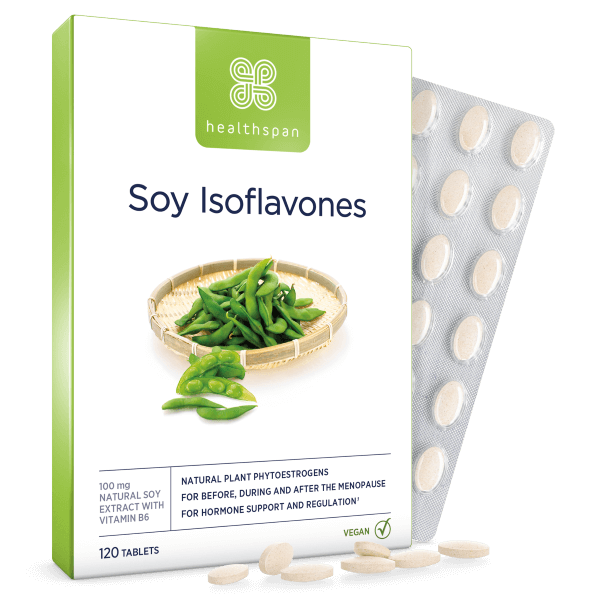
Soy Isoflavones
Natural soy extract and potent source of phytoestrogens
- 100mg soy extract per vegan tablet
- 40% isoflavones
- Added vitamin B6 to support and regulate hormonal activity
Sage leaf
Sage leaf extracts contain several antioxidant polyphenols and essential oils which, together, have astringent and perspiration-inhibiting properties. It is traditionally used to relieve menopausal hot flushes and night sweats, although whether its actions are due to the presence of plant oestrogens, or an ability to stimulate natural oestrogen production, remains unclear.
Sage is also used to boost memory and concentration through an ability to inhibit cholinesterase, an enzyme that deactivates some neurotransmitters in the brain.
A study involving 69 women who had experienced menopausal symptoms for at least a year, and who had at least five flushes a day, found that sage leaf extracts reduced the frequency of mild hot flushes by 46 per cent, moderate flushes by 62 per cent, severe flushes by 79 per cent and stopped very severe flushes altogether.
The intensity of flushes overall was halved within four weeks and reduced by 64 per cent within eight weeks.3
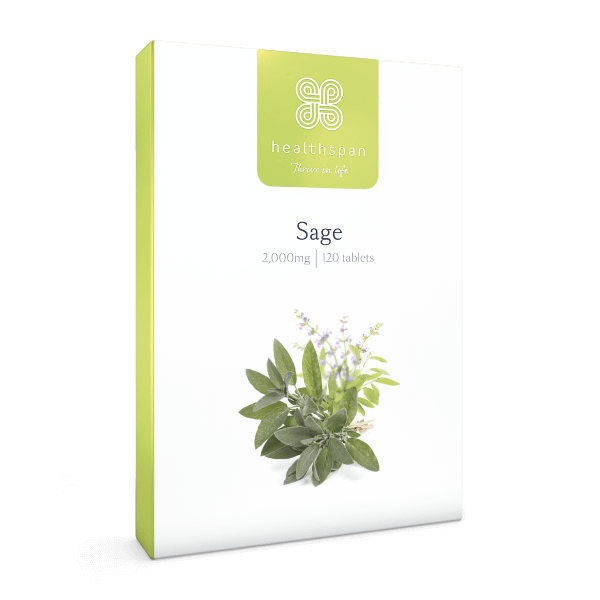
Sage Extract - 2,000mg
Powerful, natural sage leaf extract
- Powerful natural botanical sage leaf extract
- One daily tablet provides 400mg sage extract, equivalent to 2,000mg whole sage leaf
- Natural phytoestrogen
Evening primrose oil
Evening primrose oil (EPO) is a rich source of GLA: an essential fatty acid that helps to improve dry itchy skin and has a beneficial effect on calcium and hormone metabolism. Some GLA is incorporated into cell membranes, making them more flexible so that skin becomes noticeably softer and better hydrated within a few days.
Some GLA is also converted into hormone-like substances known as series 1 prostaglandins, which relax blood vessels to improve blood flow to the skin, decrease inflammation to reduce redness, and improve nerve function to reduce itching and discomfort.
It may also have a beneficial effect on hormone balance to reduce the severity of hot flushes and dry skin at the menopause. A study of perimenopausal women found that those who took EPO had significantly less severe hot flushes than those who took placebo.4
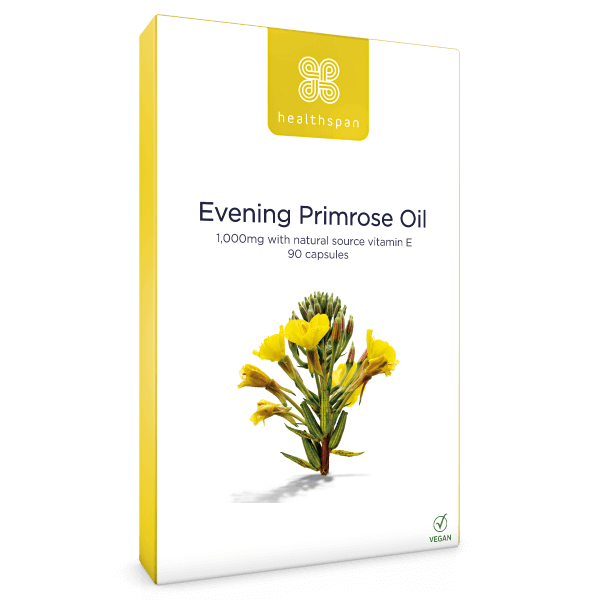
Evening Primrose Oil 1,000mg
Rich source of omega-6 fatty acids GLA and LA
- 100mg GLA fatty acid per capsule
- 600mg LA fatty acid per capsule
- Vitamin E to protect cells from oxidative stress
Sea buckthorn oil
Sea buckthorn oil contains high levels of omega-7 fatty acids and is also rich in omega 9s and powerful antioxidants such as carotenoids and vitamin E.
Sea buckthorn oil is used in supplement form to improve hair and skin quality as well as reducing dryness throughout the body, including eczema, dry eyes, dry hair and vaginal dryness.
A study involving 98 postmenopausal women experiencing vaginal dryness, itching or burning found that sea buckthorn oil was significantly more effective than placebo in relieving symptoms.5 These findings were supported by a significantly better rate of improvement in the integrity of vaginal epithelium.
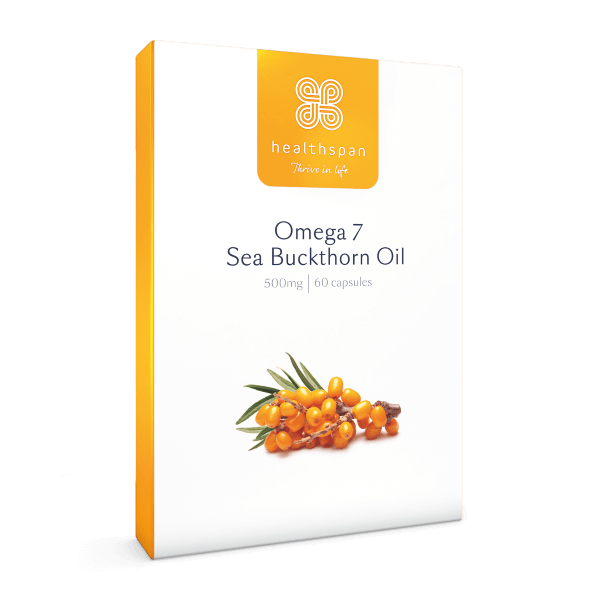
Omega 7 Sea Buckthorn Oil
High levels of omega-7 and rich in omega-9 fatty acids
- 190mg omega-7 and 35mg omega-9 fatty acids per capsule
- Added vitamin A to support skin and mucous membrane health
Magnesium
Magnesium is a mineral needed for over 700 enzymes to work properly, so is involved in just about every metabolic reaction, including the production of energy and the synthesis of hormones.
Lack of magnesium contributes to many common problems such as insomnia, fatigue, weakness, muscle cramps and constipation. Low magnesium intakes are also associated with a raised blood pressure and poor glucose tolerance.
Magnesium regulates the movement of calcium in and out of bone cells, and is important for the prevention of osteoporosis in post-menopausal women.6 In fact, studies show that women with osteoporosis have significantly lower magnesium levels than similar women without osteoporosis,7 and that both men and women with the lowest magnesium and potassium intakes had a greater risk of hip fracture.8
Taking magnesium supplements for two years has been shown to increase bone mineral density and prevent bone fractures in menopausal women.9
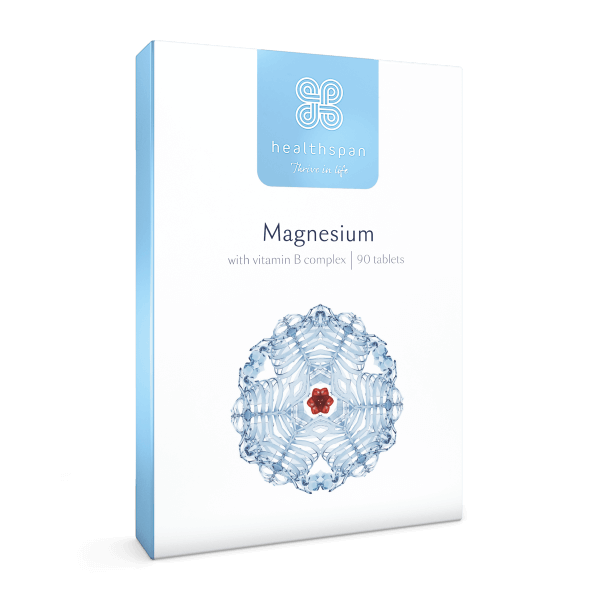
Magnesium 375mg
100% recommended daily amount of magnesium per tablet
- Reduces tiredness and fatigue
- Contributes to muscle and psychological function
- Helps maintain bones and teeth





